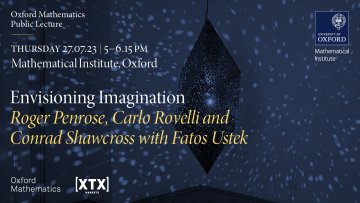Imagination is the creative force for artists. But what about mathematicians and scientists? What part does imagination play in their work? What do the artist and the scientist have in common? And how do each envision things that will never be seen?
In this panel discussion two scientists and one artist, all leaders in their field, will provide an answer. They have more in common than you would think.
Sequence models in biomedicine: from predicting disease progression to genome editing outcomes
Abstract
Sequential biomedical data is ubiquitous, from time-resolved data about patient encounters in the clinical realm to DNA sequences in the biological domain. The talk will review our latest work in representation learning from longitudinal data, with a particular focus on finding optimal representations for complex and sparse healthcare data. We show how these representations are useful for comparing patient journeys and finding patients with similar health outcomes. We will also venture into the field of genome engineering, where we build models that work on DNA sequences for predicting editing outcomes for base and prime editors.


